|
"Endling" - an individual that is the last of its species. -The journal Nature- Updated Feb. 6, 2021 Meet the last great manual focus Minolta...the XD (XD 11 in North America/XD 7 in Europe). Steady on, now! Wasn't the X-700 (1981) an award-winning camera with a more extensive and capable system of accessories?! Yes...yes it was, and it sold very well (2.1 million copies versus 750,000 XDs)...and lived a much longer life...and it has TTL flash...and a real motor drive...yadda, yadda, yadda. Just pick up an example of each and stroke the film advance lever. Case closed. Well, not really closed...I'm just getting warmed up ;-). Now the objective of this article is not to denigrate the X-700. (That would be rather unappreciative, seeing as it was my first real camera, it got me hooked on photography, and it is a good camera.) But a funny thing happened when I was looking for a backup body, back in 2000. I chanced upon a black XD 11 at my local pusher...I mean camera store, and for $50 less than I had paid for the X-700! Fast forward 16 years, and the 11 is still with me while the X-700 was sent down the road a few years back. Why? What Makes the XD Special? Minolta began development of the XD shortly after the introduction of the XE in 1974 (coincidentally, at almost exactly the same time, Canon started development of their revolutionary AE-1). They were pushing the technological envelope, adding a shutter-priority mode to the XE's aperture-priority and manual modes, adopting a more sensitive Silicon Photo Diode (SPD) meter instead of the cadmium sulfide (CdS) meter of the XE, introducing a new, brighter Acute-Matte focusing screen, an LED viewfinder display, and notably, (thanks to the AE-1 ;-)) a microprocessor. But the most visible difference from the XE was the result of another SLR's influence. In 1973, Olympus had introduced it's groundbreaking OM-1, the first truly compact SLR. The XE was too close to production to make the transition to this new form factor. But it's not hard to see the effect of the OM-1 in the XD. The XD is 220 grams (almost 8 oz.) lighter than the XE and within a few millimeters of the OM-1's dimensions. The XD provided all of the XE's capability and more in a lighter, smaller package. And it was aimed at the enthusiast photographer, not the average consumer (as opposed to the Canon AE-1 and Minolta's later X-700). So it retained the vertical-travel shutter configuration of the XE, metal top and bottom plates, very nearly the same silky film advance, the eyepiece shutter, and multiple exposure capability (although it used the system from the professional-level XK, which, ironically, was not as refined as the XE's). Now, Minolta obviously made XD production more efficient and cost-effective than that of the XE. But the drop-off in build quality was minimal, especially when compared to the XD versus the X-700. Some other features of the XD are:
XD versus X-700 The X-700 was Minolta's second-generation reply to the tremendous success of the Canon AE-1 and served as the direct competitor to its progeny, the AE-1 Program. It is not difficult to see the influence of Canon on Minolta's approach. Whereas the XD was targeted firmly at enthusiasts and carried an appropriate price tag, the X-700 was all about getting to the average consumer and sold for around $75 USD ($210 in 2021) less than the XD on its introduction. To accomplish that price reduction Minolta basically took its bottom-of-the-line XG chassis and hot-rodded it with more advanced electronics and a few bits from the XD (like the SPD "final check" meter). To appeal to the desire of people that just wanted to "point and shoot", the X-700 introduced Program mode (replacing the XD's Shutter-Priority mode) to the Minolta universe. The camera set both shutter and aperture, requiring the user only to focus and shoot (further proof that the X-700 was aimed at consumers: the camera did not display the aperture it had selected in Program mode). The X-700 also debuted Minolta's TTL (through the lens) flash metering, its most notable improvement over the XD (but tellingly, one that did not require any large outlay for new components). An even brighter Acute Matte focusing screen, a proper Motor Drive (instead of just an Auto Winder), and AE (Auto Exposure) lock rounded out the improvements over the XD. However, the subtractions are eerily similar to Canon's approach pioneered by the AE-1:
X-700s sold like crazy. Minolta sold more of them in the camera's first three years than it did XDs (including the slightly de-contented XD-5: same mechanicals, but with no aperture readout in the viewfinder, no film safe-load signal, and no integrated eyepiece shutter) in eight years. The X-700 stayed in production until 1999, meaning there are oodles of them still available. Prices are lower than for an XD in equivalent condition, but have been inching closer in recent years. So, should you buy one instead of an XD? I sold my X-700 and kept my XD for a few reasons. They may or may not be pertinent to your situation:
Conclusion This is not to say that the XD is perfect. On early versions, the exposure compensation lever is located in an area where it can be accidentally dislodged. Later versions had the EC lever moved inboard to prevent this. Also, the leatherette shrinks badly on the earlier-production copies. But you can work that in your favor if you are looking to purchase one. The shabby looks can knock the price down a bit. And then you have the opportunity to dress up the look of the camera with a custom covering, which comes in a wide variety of materials and colors for $15 to $30 USD depending on the source. If you are hesitant to do it yourself, 678 Vintage Cameras offers kits & installation for $60 CAD + shipping. You can factor that in when considering buying an XD, with prices generally ranging from $100 to $200 USD for a body in decent nick (excepting the ridiculous prices for 50th Anniversary models: with nothing added other than a badge; and the limited production XD-s model, with its built-in diopter adjustment in place of the eyepiece shutter). The XD was the final Minolta manual focus body in development before the Canon AE-1 changed the SLR industry forever. As such, it was designed and produced according to the build quality standards of the early to mid 1970s. Although it came out a year after the AE-1, it was aimed at the more established enthusiast rather than the average consumer. Post-AE-1, every manufacturer had to make compromises in components and construction if they were going to successfully compete on price with Canon. Minolta was not immune to this, and so the lower-end XG series was born in the same year, 1977, as the XD was introduced. It was a direct response to the AE-1. The XG sold as many units in its first 15 months as the XD sold in its entire eight-year lifespan. So it is really no surprise that when Minolta looked at what it would use as the basis for the X-xxx series of cameras, which would be up against Canon's improved AE-1 Program (1981), there would be far more XG DNA present than that of the XD. Minolta would also consolidate the two lines of cameras into one, which would further cut production costs. The X-700 would try to be all things to everyone. That involves compromise. AKA "good enough". And the X-700 is good enough. But not "great". 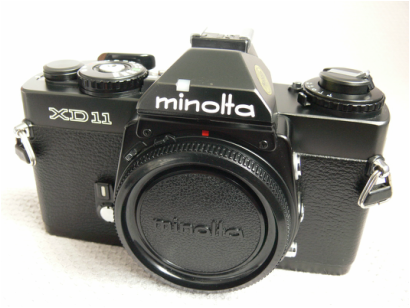 The XD is the last Minolta manual focus body that moved the bar higher in several areas: more exposure modes, more accurate metering, better vibration control, miniaturization, auto winding, brighter viewfinders, and all without compromising component and build quality. It was striving for the best in state-of-the-art technology. Its descendants would make further refinements in TTL flash metering, and better accessories. But "good enough" would now be given priority over "best", especially when it came to components. The race was now a race to the bottom. How far could an SLR be stripped down qualitywise and still be "good enough" to satisfy most users? It is a pattern that continues to repeat itself, not only in photography, but in all sorts of manufactured goods. That, to me, is what makes the XD an "endling", the last manual focus Minolta of its kind. And one of Minolta's all-time best. References: Minolta XD, XG, & X-series @ http://www.rokkorfiles.com/Cameras.html Minolta XD11 Brochure XDC 709E-A1 Minolta X-700 Instruction Manual @ www.butkus.org Minolta XD11 Manual @ www.butkus.org Canon Camera Museum 1976-1986 @ http://global.canon/en
41 Comments
12/31/2016 01:40:10 am
Hi there,
Reply
C.J. Odenbach
12/31/2016 05:53:16 pm
Hi Chris,
Reply
Roel van Gestel
9/17/2017 02:29:03 pm
Excellent article! I own the XD5, ot the XD7/11. These are starting to get expensive these days. The XD5 still does what it should do and is very reasonably priced. Maybe a tad more plastic was used, but the quality still is superb.
Reply
C.J. Odenbach
9/17/2017 04:34:14 pm
Hi Roel,
Reply
Roel van Gestel
9/18/2017 01:44:27 am
I started with Minolta in 1987. Bought an X-300 which I still have and still is operational, despite serious abuse over the years (seals are still perfect, btw). So the X-bodies may be tougher than we think after the 'tank-like' XD's. Since I shoot in A mostly, a well-used X-700 still sees action.
C.J. Odenbach
9/21/2017 10:09:05 pm
It's nice to hear that your X-300 is still going, Roel. I think you will like the XG-M. I tracked one down for a friend for his first SLR a few years ago. It is kind of a cross between the XG9 and the X-500, having a very similar control layout to the -500 but with the meter and non-TTL flash shoe of the XG. It is the only XG that can take the MD-1 motor drive. The XGs and Xs are pretty reliable in my experience, besides the capacitor issue. If you can avoid that problem, you are pretty much set :-).
Reply
Roel van Gestel
9/22/2017 05:44:40 am
Yes, the XG-M is wonderful. The periscope to read the aperture isn't working, so I will get that fixed together with an internal cleaning. Exterior is almost new. It is now on display next to the X-500 and they are like twin brothers, although the XG-M is like 8% heavier (!).
Reply
Howie Dewing
9/24/2020 02:21:09 pm
Three years late, but here I am. You'll enjoy your XG-M. I dearly miss mine, sold at the onset of digital while it was still worth anything.. My SRT-201 had been stolen (!), so my dad bought me a new XG-M in early '82. MUCH lighter than the old SRT, and yet it had that magical for the time (to me) autoexposure. Paired with the 50mm Rokkor f/1.4, it was amazing. With digital, to this day, I shoot almost exclusively in Aperture Priority, perhaps as an homage to that XG-M, but I basically prefer to control depth of field. I too, three years after your post, am seeking an XD 11, but would be happy with an XE 7. Or both. Yeah, both. .
Reply
9/25/2018 09:43:56 am
Great article. My first camera was the XD-11 way back when. I have just purchased an excelleny copy on ebay and can't wait to get back to my roots and shoot some FILM!
Reply
12/15/2021 06:35:23 am
Hello Randall, I just found this article and enjoyed your short note. The XD-11 was also my first camera (1979), my father passed it down to me as a teenager and I love them ever since. It somehow got lost during my military travels but I too found one on eBay, got if refurbished and WALLAH! I'm back to film as well and loving the nostalgia...I immediately realized two things about shooting film: 1) You gotta hone your craft because unlike digital where you select what you want to print/keep, you pay for every shot on the roll! LoL! 2) I didn't realize how heavy old school film cameras are comparted to the new digital cameras (plastic)! Overall, film is awesome, just like opening presents for Christmas, you never know what you have until you get it developed!!!
Reply
C.J. Odenbach
9/25/2018 12:51:07 pm
Thanks, Randall. And welcome back to FILM! Enjoy your new/old XD 11 :-)
Reply
Gary & DFaisy
6/2/2019 05:04:05 pm
Why are so many people today worried about weight? I'm 75, started with a Graphic 4x5, electronic flash and 20 film packs running around a football field in cold and rain for the school's newspaper. 1958. I have a NIB XD-11 and XE-5 and am still amazed at the low prices of Minolta's 35mm lenses! I think NASA used Minolta even! Generations favoring cheap crap over quality today. I started with FILM and had my own darkroom in 1957. Film and analog music is still the best - it's more natural!
Reply
C.J. Odenbach
6/2/2019 05:51:56 pm
It’s funny how everything is relative. If I were to pick up a Graphic 4x5 today, I would probably buckle a bit at the knees ;-). But an XE or XD feels just fine because they are what I started out with. I recently handed my XD with a 58/1.2 to a young friend that has grown up with an iPhone, and she said “that’s so heavy”. I couldn’t help but smile. Digital definitely offers more convenience, but it’s nice to slow down and widen one’s perspective and analog is great for that. I do think about weight when considering how much equipment to put in my pack for hiking, but many times today I think it’s used more for marketing purposes than actually getting people to think about their actual capabilities and needs. Thanks for sharing your experience; kids today will have no idea what their missing...unless someone lets them know about it. Take care, and please keep sharing the joy analog gives you with others :-).
Reply
10/30/2019 03:56:22 am
Hello CJ,
Reply
C.J. Odenbach
10/30/2019 08:52:30 am
Hi Steve,
Reply
Mel Jones
11/26/2019 09:24:36 am
Thanks again CJ. I picked up an XD7 for the ludicrously low price of £25. The wrecked leatherette probably put people off and 'Xenia' (because all my cameras have names) was absolutely filthy. She has however scrubbed up to be very beautiful in her black finish. A change of leatherette, new seals and a thorough clean and she looks almost new. I haven't run any film through yet but I have no doubts she will perform well. I have to say its one of the most beautiful looking 35mm SLRs and handles beautifully too. Small and compact with silky controls and an amazingly bright viewfinder.
Reply
C.J. Odenbach
11/26/2019 01:10:55 pm
Uh-oh, Mel. This is beginning to sound serious. First the SRT and now an XD7? That is getting into intervention territory ;-). All kidding aside, congratulations again on a great find and for giving Xenia a new lease on life. That is one of the most satisfying parts of this “affliction” for me: finding a scruffy-looking, neglected knockabout and with a bit of TLC and elbow grease seeing it come back to life. I am sure you are going to enjoy her even more when the film rolls through; the XD meter is one of my favourites and has never let me down. For my money, it’s a tall order to beat an XD when it comes to feel, Minolta just got so many things right. You can tell that the designers and engineers were photographers themselves and not just throwing a bunch of parts together to meet some specification.
Reply
Mel Jones
11/27/2019 06:13:35 am
Ah I am over an addiction (isn't that what all adicts say :) )
C.J. Odenbach
11/28/2019 07:39:20 am
Roel van Gestel
11/26/2019 01:25:48 pm
Two years later I am happy to say I own 1 XD5, 2XD7's and a black new logo XD7. Interesting story about the new logo XD7's is that the old logo sometimes can be found underneath the additional front plate. Mine had nothing there, but some grey or black new logo camera's have the old logo, without the rising sun, just a few screws away. Old stocks, new marketing.
Reply
C.J. Odenbach
11/26/2019 03:30:09 pm
Hi Roel,
Reply
Thomas
1/20/2020 07:30:33 am
Hello CJ,
Reply
C.J. Odenbach
1/20/2020 12:51:24 pm
Hello Thomas,
Reply
Peter Rand
4/12/2020 01:32:58 am
Hi CJ,
Reply
C.J. Odenbach
4/12/2020 02:02:29 pm
Hi Pete,
Reply
Khusein
7/17/2020 01:06:43 pm
Minolta XD always been my favorite camera since I got into Minolta with the purchase of XG-7 in high school:) Then I managed to upgrade to X-700, but always wanted XD. Nowadays, I own black late version japanese XD with green 125 shutter speed and updated compensation dial. My only goal is to find a new logo black XD someday, otherwise I don't think I need another 35mm SLR in my life.
Reply
C.J. Odenbach
7/17/2020 02:35:42 pm
Thanks for the kind comment and sharing your experience, Khusein. I have the same variant as you. Best wishes on finding a black Rising Sun Logo. I have gotten my hands on a chrome parts body with the new logo, but have never held a black one. They are rare for sure. Take care.
Reply
emel
9/27/2020 08:09:16 am
My first analog camera was the x700 I bought in 2014. I sold it thinking I was bored with it. but I regretted it very much. that's when I realized how much I love minolta.
Reply
C.J. Odenbach
9/27/2020 08:59:04 am
Nice to hear from you, Emel. And congratulations on your procurement of a late-version XD-s. They are quite rare. I am sure you will get along with it just fine. As for obtaining another X-700, it never hurts to have another Minolta, particularly a model that means so much to you personally. Best regards :-).
Reply
Howie Dewing
2/21/2021 11:55:58 am
Hello again Mr. Odenbach. I've read that the XD 11 can actually reach 1/2000 sec. shutter speed when in 'S' mode, with the shutter speed set to 125 and the aperture on the green number on MD lenses. With that setup ("Green for Go" in Minolta lingo), if you overexpose by 1-stop, so the top overexposure arrow just comes on, the shutter will compensate and go to 1/2000 sec. Have you experienced this? I'm going to try it with mine, hopefully with fresher film. The Fujifilm Superia X-tra 400 I ran through it last time was expired and hit-and miss exposure wise. I'll get some fresh film and test each shot against my Sony a7 II with the same lens and ISO to get, or at least approximate a 1/2000 sec. shutter speed.
Reply
C.J. Odenbach
2/21/2021 07:51:37 pm
Hi Howie. Great question. I haven't used Shutter Priority much on my XD11, so I can neither confirm nor deny the 1/2000 sec. compensation. I would think the camera would do the same thing if you intentionally overexposed by 1 stop in Aperture Priority if that capability was built-in. Interestingly, the Leica R5, which descended from the XD, was rated for 1/2000 sec. But when tested by Popular Photography in February 1988, their copy was 1/3 of a stop overexposed at the 1/2000 setting, meaning that the actual shutter speed was in the area of 1/1650 sec. This was not abnormal by any means, as most manufacturers at the time looked for +/- 1/2-stop accuracy. 10 years earlier, Minolta may well have known that the Seiko MFC-E shutter was capable of higher speeds than 1/1000 sec., but they might have felt that they could not be confident of stable, sustained performance above 1/1000 sec. and so they did not bother to publicize the possibility of such performance. "Under-promise and over-deliver" was a more common mindset among the Japanese SLR manufacturers at that time.
Reply
11/1/2021 12:15:01 am
Hi C J Odenbach !
Reply
C.J. Odenbach
11/1/2021 06:35:27 am
Hi Franjo,
Reply
Kaliph Rehman
10/6/2022 11:35:58 am
This was wonderful to read C.J. Odenbach. The analysis you gave in the conclusion was moving too. I just bought a Minolta XD because I viewed it in much the same way as you described: the last of those cameras built ruggedly to last and for the sake of high quality. I'm glad I made the sound decision to purchase one of these pre-Canon AE-1 / pre-R2B cameras.
Reply
C.J. Odenbach
10/6/2022 04:58:04 pm
Thanks for taking the time for the kind comment, Kaliph. I hope you will enjoy your XD for many years to come. Best regards.
Reply
Mike Gillard
12/9/2022 03:20:40 pm
I love the XD I have 3, 2 XDs from Japan and a XD7 from here in the UK. I also have a soft spot for the X570 which died just after I'd bought it. This indirectly did me a favour, I swapped out the old leaky capacitor and replaced it with a Tantalum one. End of problem.
Reply
C.J. Odenbach
12/9/2022 05:25:58 pm
That's a lovely fleet of Minoltas, Mike. And congratulations on resuscitating the X-570. It's my favorite of the X-xxx series. Looks like you are set :-). Best regards.
Reply
Roel
12/10/2022 02:37:32 am
I just keep on coming back to this great writeup. Recently I purchased an early XD-7 with 50mm 1.7 and 55mm filter thread for 30 Euros. I only had to pay for the lens, since "the camera was defect".
Reply
C.J. Odenbach
12/10/2022 05:07:43 am
Nice to hear from you again, Roel. There is nothing quite like that feeling when buying a kit for the lens because it's a good enough deal and then getting the bonus of a working camera with just a simple fix like that. Congratulations on a great score! Best regards :-).
Reply
3/15/2023 11:24:01 am
Hey C.J. for some reason I just came across this post! Thank you for doing it. I've had an XD5 for a year and love it. Minolta really made a great series with this one.
Reply
C.J. Odenbach
3/17/2023 09:24:46 am
Always nice to find something hiding in the back 40 ;-). Love all my Minoltas, but if push came to shove, I'd have to pick the XDs as my overall favorites. Just the balance of size, weight, and build quality makes them hard to beat. Hope you enjoy your XD-5 for a good long time, Shawn. Take care.
Reply
Your comment will be posted after it is approved.
Leave a Reply. |
C.J. OdenbachSuffers from a quarter-century and counting film and manual focus SLR addiction. Has recently expanded into 1980's AF point and shoots, and (gack!) '90s SLRs. He even mixes in some digital. Definitely a sick man. Categories
All
Archives
June 2024
|
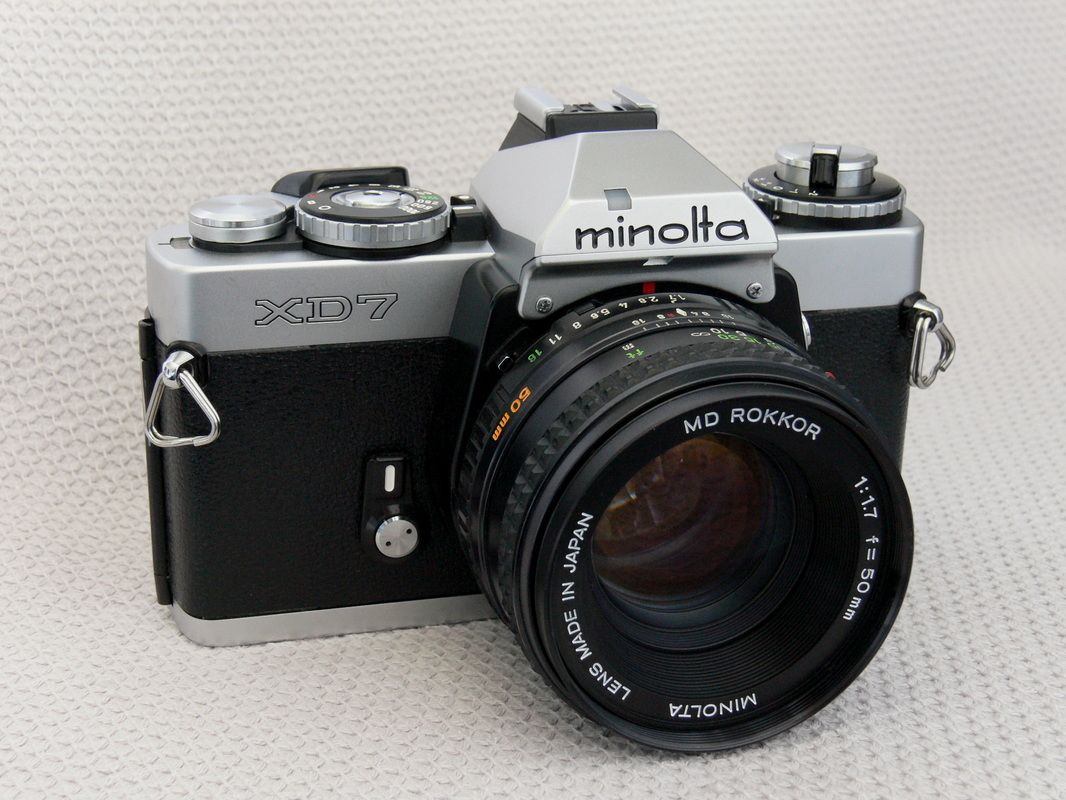
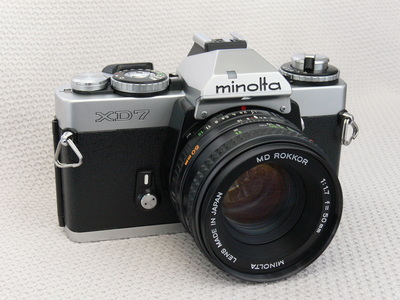
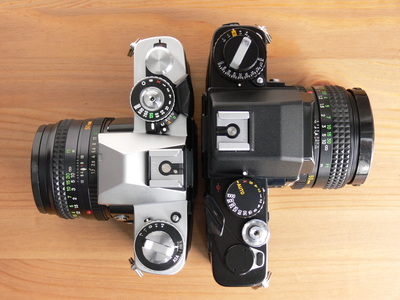
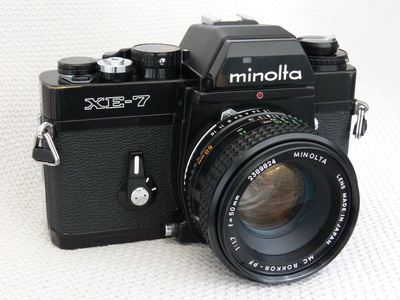
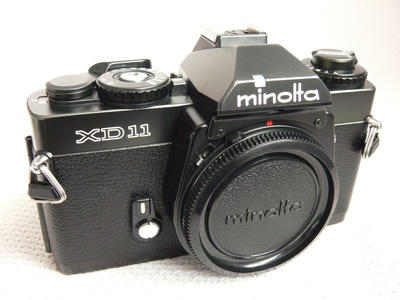
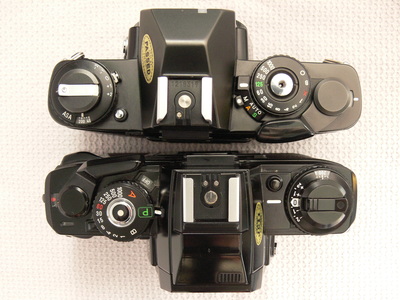
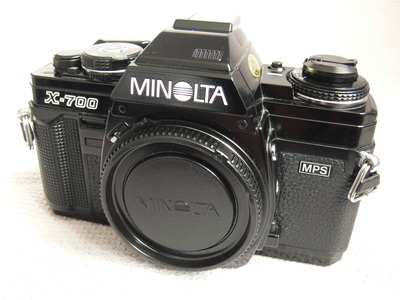
 RSS Feed
RSS Feed